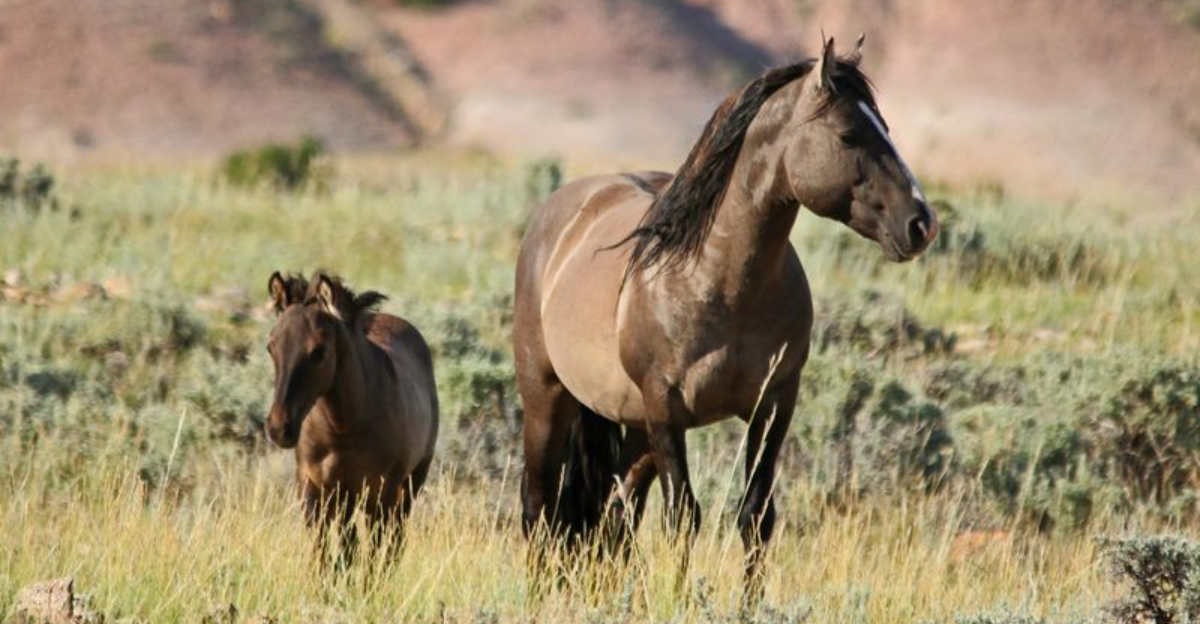There’s something magical about spotting wild horses galloping freely across open landscapes, their manes catching the wind like whispers of the untamed past.
Across the U.S., these majestic creatures still roam, embodying freedom and rugged beauty in places where nature holds the reins.
Whether rolling plains, desert vistas, or coastal dunes, these 13 spots offer a rare chance to witness wild horses in their element, creating unforgettable moments for adventurers and dreamers alike.
1. Assateague Island, Maryland & Virginia
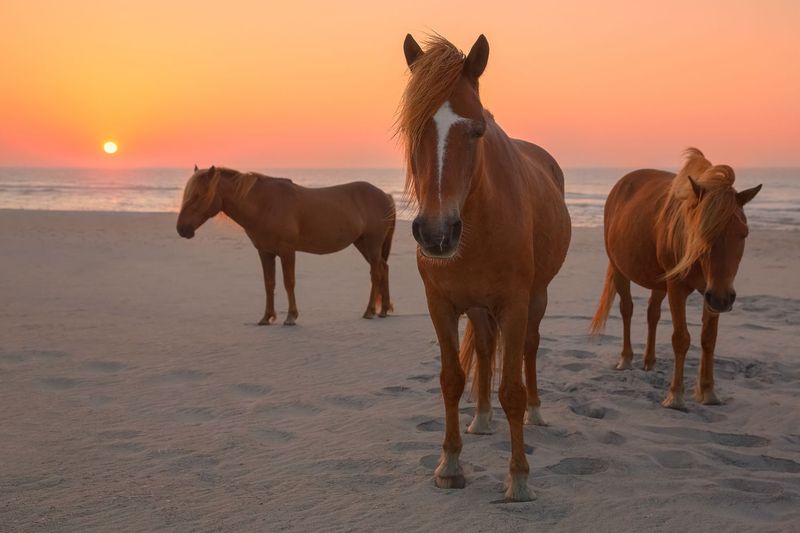
Salty sea breezes and wild ponies create the perfect backdrop on this barrier island split between two states. Legend claims these horses descended from survivors of a Spanish shipwreck centuries ago.
Visitors can spot the famous swimming ponies year-round, though they’re most active during morning and evening hours.
Remember to maintain a safe distance—these aren’t petting zoo animals but truly wild creatures with powerful kicks!
2. Outer Banks (Corolla), North Carolina
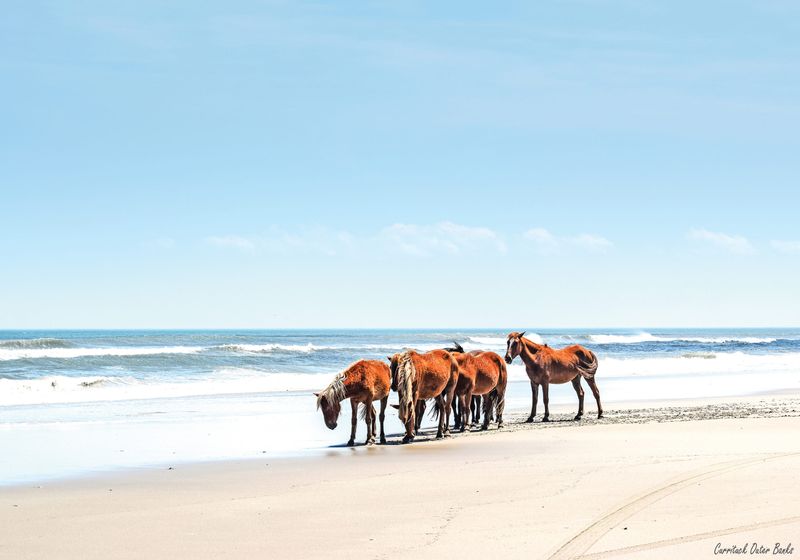
Colonial Spanish Mustangs roam freely along these picturesque beaches, creating postcard-perfect scenes against the Atlantic backdrop.
For over 500 years, these resilient equines have adapted to the harsh coastal environment. Four-wheel drive vehicles are necessary to access their territory beyond the paved roads.
Dawn excursions offer the best viewing opportunities when horses emerge from the maritime forests to graze on sea oats along the shoreline.
3. Pryor Mountains, Montana & Wyoming
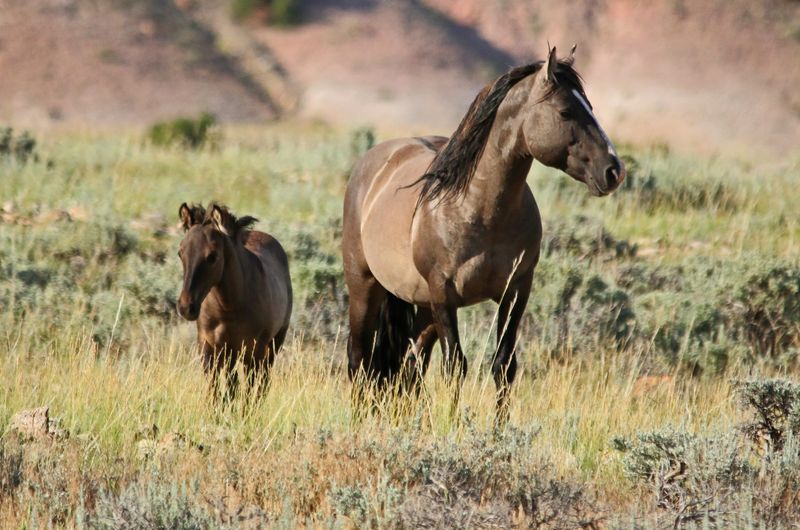
Rugged doesn’t begin to describe this breathtaking mountain range where some of America’s purest Spanish Mustangs thrive.
DNA testing confirms these horses carry lineage directly from the conquistadors’ steeds. Summer months bring spectacular viewing as bands gather near watering holes.
The Pryor Mountain Wild Horse Range spans 38,000 acres of diverse terrain from desert to alpine meadows, allowing visitors to witness these majestic animals against dramatically different backdrops.
4. Onaqui Mountains, Utah
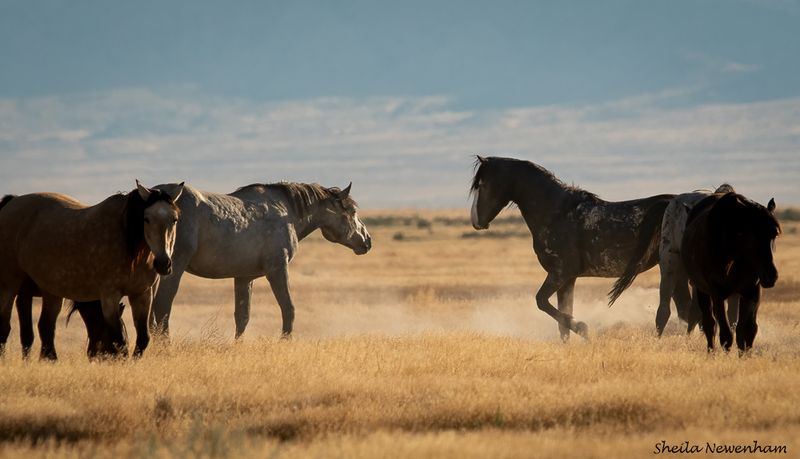
Just two hours from Salt Lake City lies a photographer’s paradise where approximately 400 wild horses create stunning compositions against Utah’s otherworldly landscapes.
Sunrise casts the desert in golden hues as horses kick up dust clouds visible for miles. These social animals often gather in large groups, making the Onaqui herd among the most accessible and photographed in America.
Spring brings adorable foals who frolic among sagebrush while curious bachelor stallions often approach closer to visitors.
5. Little Book Cliffs, Colorado
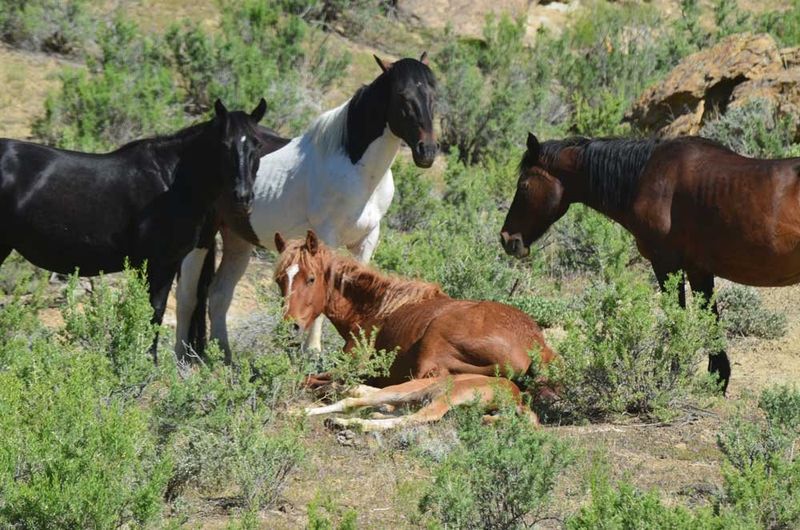
Painted in earth tones that blend perfectly with the surrounding sandstone cliffs, the mustangs here seem to materialize like desert spirits.
This rugged wilderness area spans 36,000 acres of canyons, plateaus, and washes. Hiking trails wind through the range, offering intimate glimpses of horse behavior rarely witnessed elsewhere.
Autumn visits reveal spectacular foliage contrasting with the horses’ silhouettes while water sources become gathering points during the heat of summer days.
6. Virginia Range, Nevada
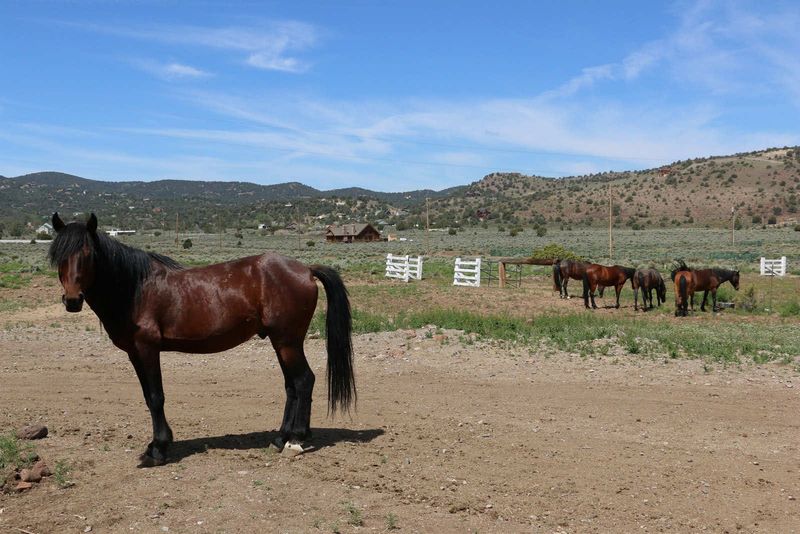
Urban cowboys take note—this unique range sits just outside Reno, making it America’s most accessible wild horse viewing opportunity.
Approximately 3,000 mustangs roam these hills, descendants of mining-era workhorses released when operations ceased. Morning fog creates mystical scenes as horses emerge from the mist.
Unlike most wild herds, these horses occasionally venture near neighborhoods, creating surreal moments when ancient wildness meets modern suburbia at the edges of this surprisingly diverse ecosystem.
7. Sand Wash Basin, Colorado
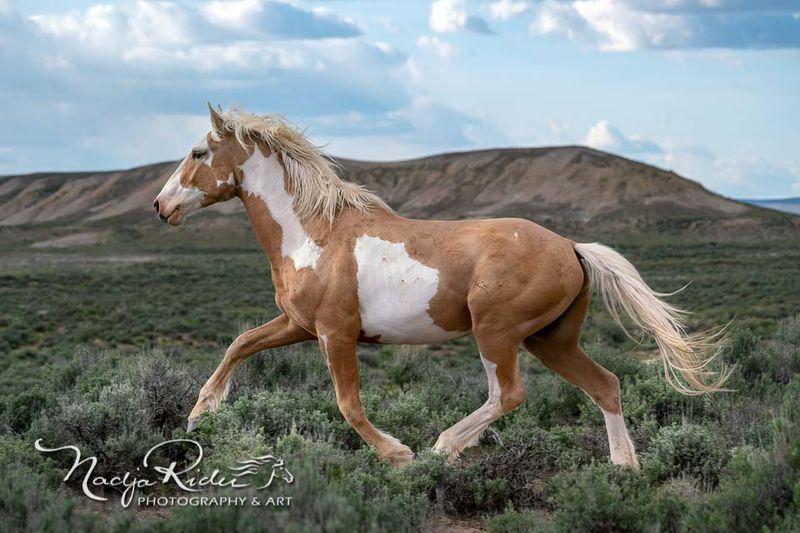
Famous for producing some of America’s most colorful wild horses, this northwestern Colorado basin dazzles visitors with its painterly equines.
Palominos, pintos, and striking blue roans display genetic diversity rarely seen in other herds. The stark beauty of sagebrush steppe stretches for miles, punctuated by dramatic horse silhouettes.
Celebrity horses with devoted social media followings roam here, including descendants of the legendary stallion Picasso, whose distinctive markings made him a wildlife photography icon.
8. Theodore Roosevelt National Park, North Dakota
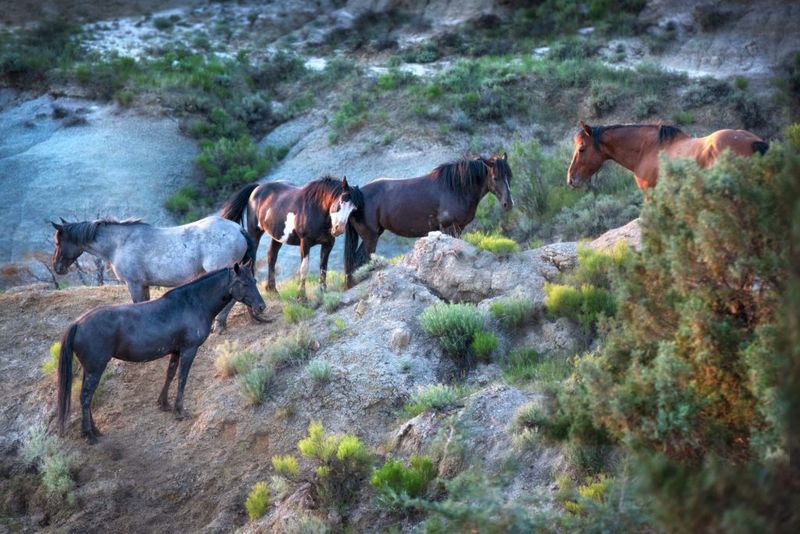
Bison aren’t the only magnificent creatures roaming this underrated national park.
Wild horses thrive among the painted badlands, creating scenes that would make the park’s namesake president beam with conservation pride.
Scenic drives loop through prime horse territory, offering easy viewing for all ages and abilities.
Spring brings vibrant wildflowers and newborn foals, while winter showcases hardy bands trudging through snow, their breath visible against the stark landscape—living proof of their remarkable adaptation.
9. McCullough Peaks, Wyoming
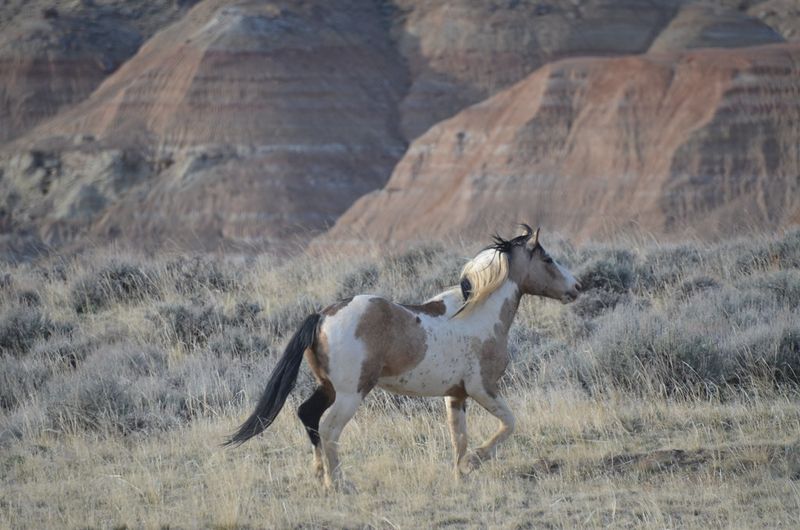
Whiskey-colored mustangs with flaxen manes catch the Wyoming light like living gold against red soil badlands.
This remote range near Cody offers serious wildlife enthusiasts a less crowded alternative to better-known viewing areas. Four-wheel drive vehicles navigate rough roads leading to prime observation points.
Patient visitors might witness dramatic stallion confrontations or tender moments between mares and foals amid this stark landscape where horses have survived since before Wyoming became a state.
10. Cold Creek, Nevada
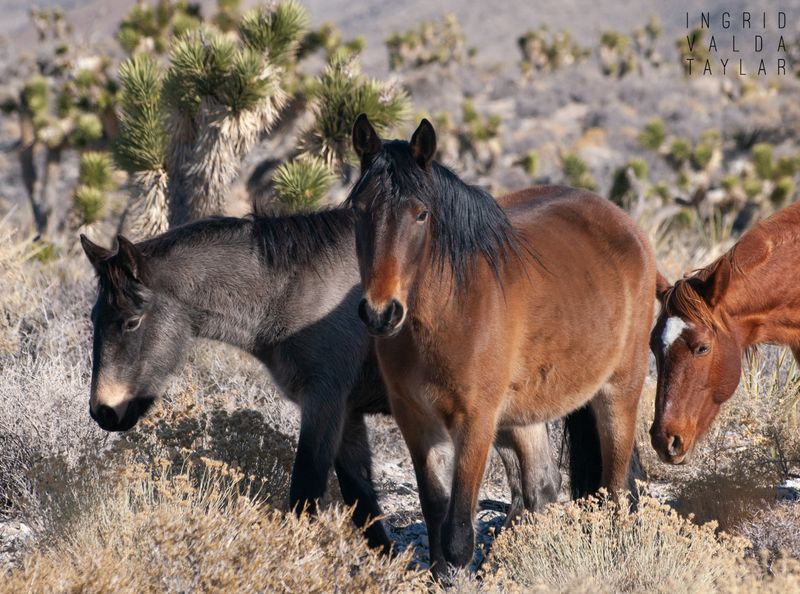
Piñon pines create fragrant shade where wild horses gather just 45 minutes from Las Vegas’s neon glow.
This accessible mountain area offers surprising encounters with nature’s majesty against Spring Mountain backdrops. Winter brings particularly magical viewing as horses paw through snow seeking forage.
Unlike desert herds, these mountain-adapted equines sport thicker winter coats and more robust builds, demonstrating remarkable adaptation to elevation changes and seasonal temperature swings in this diverse ecosystem.
11. Cerbat Mountains, Arizona
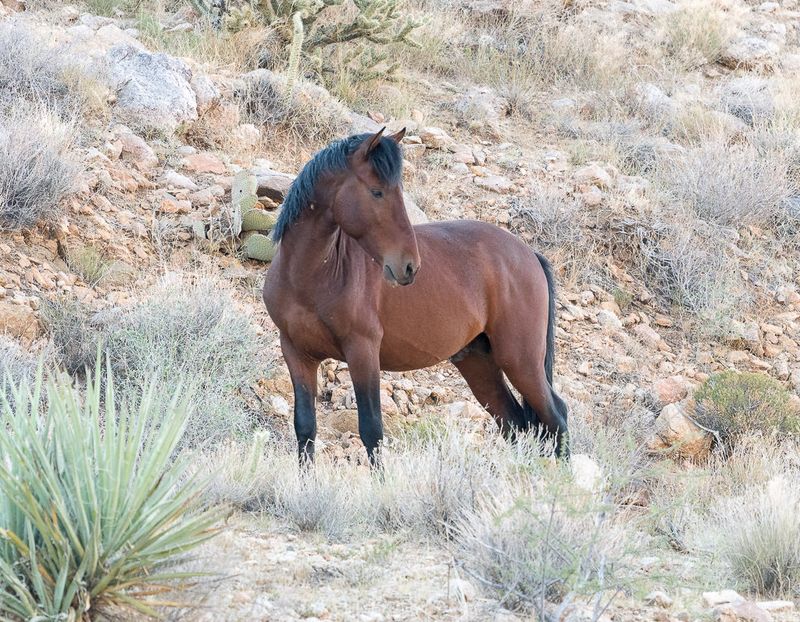
Genetically pure Spanish Mustangs roam these rugged mountains near Kingman, representing one of America’s oldest and most historically significant wild horse lineages.
DNA testing confirms these horses remain virtually unchanged from their 16th-century ancestors. Desert-adapted and remarkably hardy, they navigate steep terrain with ballet-like precision.
Dawn hikes offer the best chances for sightings as horses move between water sources, their coats glowing copper and chestnut against the rising sun illuminating saguaro silhouettes.
12. Steens Mountain, Oregon
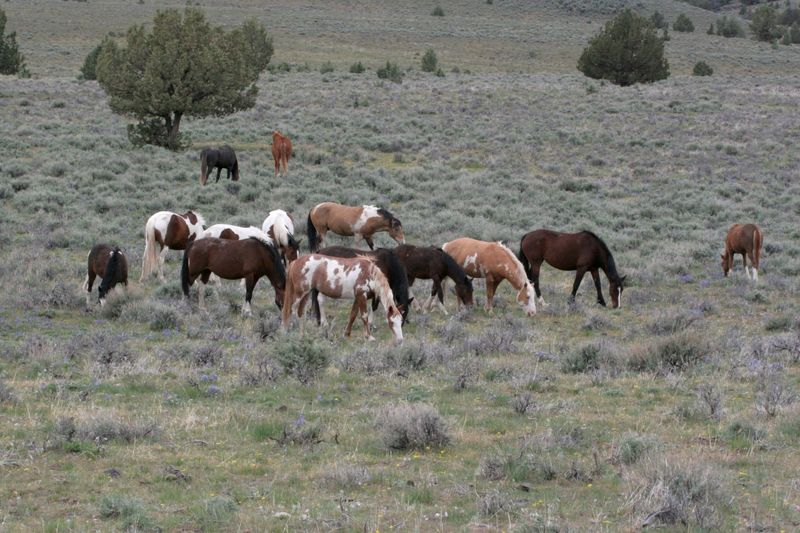
Volcanic landscapes create otherworldly backdrops for the wild horses roaming this remote southeastern Oregon wilderness.
Kiger mustangs—with their distinctive dun coloring and primitive markings—inspired the animated horses in DreamWorks’ “Spirit” film.
Summer wildflower explosions transform high meadows into technicolor wonderlands where horses graze.
Primitive camping allows dedicated wildlife watchers to spend dawn and dusk hours observing natural behaviors, from playful foals testing their legs to watchful stallions maintaining vigilance over their bands.
13. Sheldon National Wildlife Refuge, Nevada
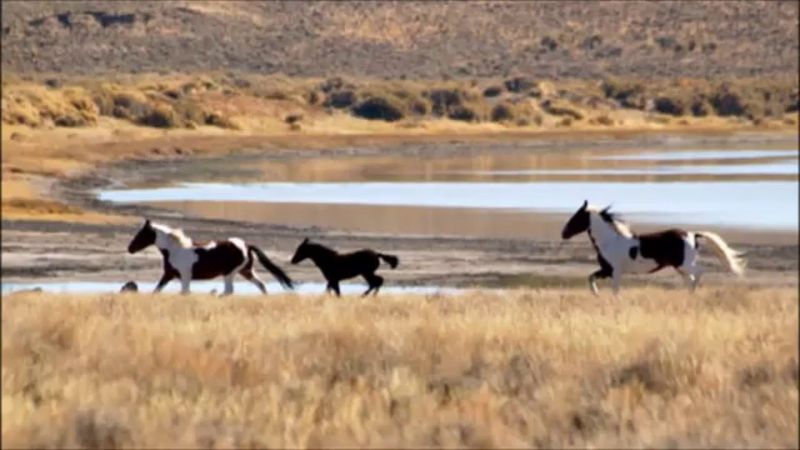
Vast emptiness stretches to the horizon in this remote northwestern corner of Nevada where wild horses share territory with pronghorn antelope.
High desert plateaus create stunning panoramas of horses silhouetted against enormous skies. Primitive roads require high-clearance vehicles but reward adventurous travelers with genuine solitude among the herds.
These horses display remarkable independence and wariness compared to more frequently observed populations, offering glimpses of truly wild behavior patterns rarely witnessed in more accessible locations.
